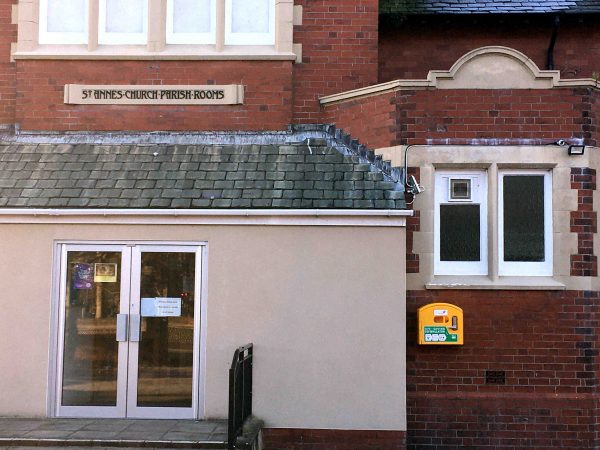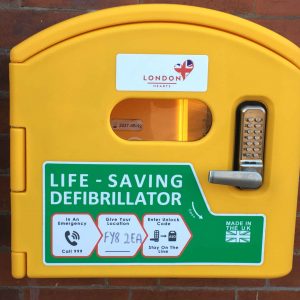Defibrillator

A defibrillator is housed in a yellow cabinet mounted on the front wall of the Parish Rooms.
This enhancement to community safety has, to a large part, been most generously funded by an anonymous donor. Grateful thanks are also due to The London Hearts Charity for their financial contribution.
The defibrillator was chosen from a line-up of over forty currently available. Features such as ease of use and long shelf-life (5 years), use for both adults or children, automatic sensing of body impedance, progressive power escalation if initial attempts at defibrillation are unsuccessful, length of guarantee (8 years) and ease of servicing in the UK if required, were the factors that led to The Mindray C1A defibrillator being chosen.

The cabinet is illuminated and has a small heater inside to keep the battery in good condition. Allowing the door to remain open to the elements would degrade the battery very quickly; hence the need for a lock. The lock is operated using a code which is held by the emergency services (999). Please note that the lever should be moved down and anticlockwise to open. Inside all defibrillator cabinets is not only the defibrillator itself but also a pack containing scissors for cutting clothing, a razor to remove hair if necessary, gauze to dry the skin, patient’s facemask and gloves if required.
The defibrillator is quite light at around 2kg. It is quite robust in that it is shock-proof if dropped, (but please don’t!) and opens by unfolding to reveal two electrode pads. Upon being opened the defibrillator will begin to talk to you – it’s quite loud so don’t be alarmed! The machine talks you through what to do and will provide a shock to the patient if required. It’s fully automatic so all you have to do is apply the pads to the patient’s chest and follow instructions. It’s as simple as that.
Previous experience is not necessary. However it is worth thinking about how you would respond if you saw someone collapse, unresponsive and not breathing: give Cardio-Pulmonary Resuscitation, call for help, 999, send for the defibrillator to be brought to you. First aid training is widely available through St. John Ambulance. There is also an excellent online demonstration of how to use a defibrillator at https://vimeo.com/557677120/e7524918c5 and I would commend it to you all.
If anyone would like any further information then please feel free to contact me on 01253 932013 or e-mail chris.hale54321@gmail.com
Dr. Chris Hale (Parish Safeguarding Officer)